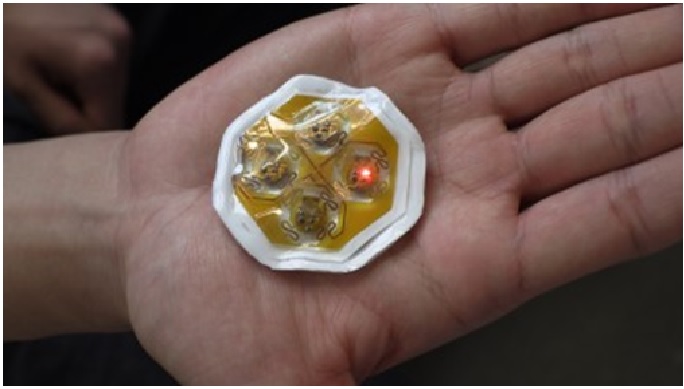The Innovation Technology of Solar Powered Refrigerator
Most people think such a backward step in the evolution of modern civilization is a bit uncalled for, but it does draw attention to the drawbacks of modern refrigeration techniques. But there are other options besides resigning yourself to warm beer. [1] Solar-powered refrigerators are pretty easy to come by these days, and they get around the energy-consumption issues associated with traditional fridges. They also get around the fact that 2 billion people around the globe have no access to electricity in the first place.

Figure 1. The Solar Powered Refrigerator [2]
Solar energy, often known as photovoltaics, is ubiquitous these days. Some of us use it to power our homes; others buy carbon offsets that put money into solar and wind power to offset traditional energy use. Solar panels sit atop buildings, homes and tents and power cell-phone chargers, radios and the International Space Station (ISS). These technolog ies use photovoltaic (PV) cells to convert sunlight into electricity. When sunlight strikes a PV cell, it heats the cell up. Heating the cell causes electrons to knock loose, and these electrons are converted into a stream of electricity, or current. The Solar Powered Refrigerator is shown in figure 1.
One of the most common solar-powered refrigerators on the market, the NASA-licensed SunDanzer, uses this PV technology to power an otherwise mostly traditional refrigeration setup. But one of the most recent developments uses "solar power" in a much more basic way.
The average refrigerator takes about three or four average solar panels to run. The average refrigerator found in the United States uses approximately 57 kWh per month while the average freezer uses 58 kWh. Adding those together brings a combined total of 115 kWh.
A 100 watt panel receiving at least 8 hours of sunlight per day will produce almost 1 kilowatt-hours per day or 30 kWh per month. [3] Divide that usage of the refrigerator (115kWh) by 30 kWh per month and you get 3.8 solar panels. This means you’ll need four panels to keep this refrigerator running.
A 300-watt solar panel is at about the upper end of what you could reasonably be looking for in portable applications. They can provide significant power generation when taken on the road for RV vacations or other trips. These panels are available in compact enough sizes to take to remote sites where some power generation is required.
To get an accurate calculation of what you can and cannot power with a single 300 watt solar panel, you’ll need to compare the output per day or month (so 2.5 kWh/day for the solar panel) with the needs of an appliance (3.8kWh/day for a refrigerator). In this example, a 300 watt solar panel would not be enough to power that refrigerator.
The advantages of the solar refrigerator are similar to the ones offered by the other solar energy devices. Since the solar refrigerator runs on solar energy there is lots of saving of electrical power that would have been produced by the conventional power plants causing lots of pollution. [4] The solar energy is available freely, abundantly and is a clean source of energy. One of additional advantage is that the excess power produced by the solar refrigerator can be used for the other domestic purposes.
The solar refrigerators can be very useful in far off remote places where there is no continuous supply of electricity.
References:
- https://home.howstuffworks.com/solar-powered-refrigerator.htm
- https://www.fastcompany.com/90489600/this-pay-as-you-go-solar-fridge-helps-poor-african-families-save-money-and-food
- https://renogy.com/blog/what-can-a-300-watt-solar-panel-run/
- https://www.brighthub.com/environment/renewable-energy/articles/35935/
Cite this article:
Vinotha D (2022), The Innovation Technology of Solar Powered Refrigerator, AnaTechMaz, pp.109















